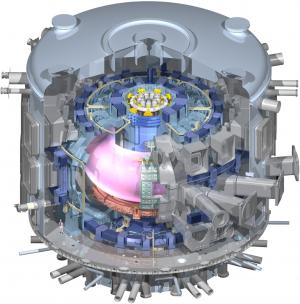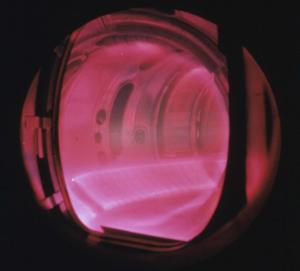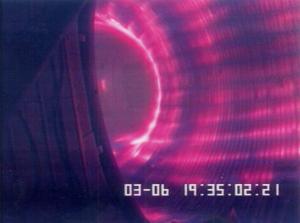The art of mixing fuels
Spread over a period of roughly seven years, hydrogen, helium (with a variable proportion of hydrogen) and deuterium campaigns—interspersed with maintenance and upgrade periods—will provide operators with the necessary know-how to run the machine, commission its components, and control its plasma before entering nuclear operation.
First Plasma, scheduled in November 2020, will use hydrogen. "It is presently defined as a 'minimal plasma' of a few-hundred-milliseconds duration with approximately 100 kAmps of current intensity," explains David Campbell, Director of the ITER Directorate for Plasma Operation.
This inaugural plasma will be run in a rather "bare" machine: no divertor or shielding blankets will have yet been installed. "We will just have poloidally distributed structures to protect the diagnostic systems and other elements on the vacuum vessel inner wall," says David.
First Plasma will be followed by a one-month-long campaign of short-duration plasma pulses (perhaps several seconds in length), during which the goal will be to increase the current intensity progressively to one to two MAmps.
By March 2023, ITER will be ready to begin its experimental program, based initially on running hydrogen or helium plasmas. The "non-active" campaign will last about three years. As plasmas are created at a rate of twenty to thirty per day, systems will be tested, operators trained and more components commissioned.
For reasons that are complex and not fully understood, it requires less heating power to get into H-mode with helium than it does with hydrogen. As not all heating systems will be operational when ITER enters its experimental program, helium is a good compromise.
Helium plasmas (with a small percentage of hydrogen) will also make it easier to commission the Ion Cyclotron Radiofrequency (ICRF) heating system. "Ion cyclotron waves are not absorbed very well in pure hydrogen plasmas," says David. "When you use helium and a minority of hydrogen, up to 5 percent, you get much better results..."
In the deuterium-only (DD) phase that will follow, fusion reactions in the plasmas will be sufficiently numerous to begin activating the inner components of the vacuum vessel. The DD plasmas will closely mimic many aspects of the behaviour of the next-stage deuterium-tritium (DT) plasmas, including H-mode.
As the proportion of tritium is progressively increased, more fusion power will be produced. "Within four to six months, we aim to be able to demonstrate Q=10 for several tens of seconds. This, however, is not yet the full mission goal: we will need time to learn how to handle long pulses in order to achieve the project's objective of sustaining Q=10 for periods of 300 to 500 seconds."




